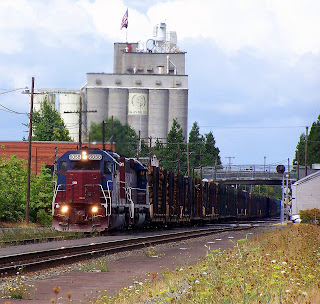
By the 1960s, the network of privately owned and run passenger trains in the US was a disaster. None were making any money, and most were driving the operating railroads into bankruptcy. The Interstate Highway System, jet aircraft, old and worn out equipment were all contributing factors. By 1970 transportation planners realized that a viable passenger rail network was vital to the national security. After much political wrangling, a federally run system, the National Rail Passenger Corporation (AMTRAK) was formed to run a basic route structure. Money losing railroads had a choice of continuing to subsidize their own passenger trains, or have Amtrak take them over by making an upfront monetary contribution. Most lines decided to pay up and have Amtrak take over, but a few resisted, for various reasons. One of those resisting lines was the Denver & Rio Grande, running between Denver and Salt Lake City. The line opted to continue running their Rio Grande Zephyr six days a week between those two cities, going east one day and west the next. They connected with Amtrak trains in both cities.
By 1983 the economic situation had changed. The nation was in the throes of a recession. Rail traffic was down. The 45 year old equipment used on the Zephyr was worn out. Management decided it was in their best interest to let Amtrak take over the route. The last runs of the Zephyr, the last privately operated intercity passenger train in the country, were scheduled for April.
With that in mind, my buddy and I decided to take a week off from work, and head for Colorado. Neither of us had done any railfanning there before. The Zephyr was our primary reason for the trip, but there was lots of other interesting rail action for us, too. We hoped to see some Rio Grande freights, among other things.
Things didn't turn out quite like we had planned. The week before the last run was scheduled, the mainline was severed by a massive landslide at Thistle, Utah. That meant no through freight activity, bad for us. It also meant that the Zephyr would only travel as far as Grand Junction, in western Colorado, instead of all the way to Salt Lake City. Good for us!
The picture here is the westbound Zephyr, in Glenwood Canyon, along the Colorado River. This is a spectacularly scenic stretch of line. This train is the second to the last westbound run. We were in Denver for the departure of the last run two days later. A lot of other folks were, too. Railfans, history buffs, regular folks, and news crews both local and national were on hand for the end of an era.
 The Mt Hood Railroad runs south out of Hood River to Parkdale. These days the line hauls mostly tourists on a variety of excursions, but in years gone by it made money by hauling lumber products and fruit to the connection with the outside world in Hood River.
The Mt Hood Railroad runs south out of Hood River to Parkdale. These days the line hauls mostly tourists on a variety of excursions, but in years gone by it made money by hauling lumber products and fruit to the connection with the outside world in Hood River.












